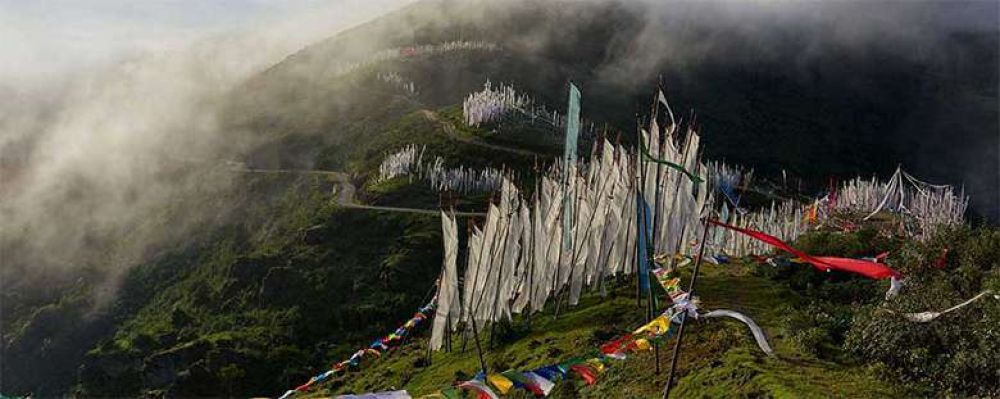

Located in the Kingdom of Bhutan, Chele La Pass represents one of the highest motorable passes in the country, sitting at an altitude of approximately 3,988 meters. Situated between the valley of Paro and the valley of Haa, it has been a significant point of interest for tourists for many decades.
The history of tourism in Bhutan, including Chele La Pass, is a relatively recent development. Until the 1970s, Bhutan remained largely isolated from the outside world, with the government tightly controlling entry into the country. With the coronation of King Jigme Singye Wangchuck in 1974, Bhutan cautiously opened its doors to foreign visitors. Chele La Pass, due to its breathtaking panoramic views of the Himalayas, soon became a prime location for the intrepid tourists seeking the beauty and serenity of the untouched landscapes.
Throughout the 1980s and 1990s, the number of tourists to Bhutan gradually increased, with word-of-mouth becoming a powerful tool in boosting Chele La Pass’s allure. Adventure tourism, particularly trekking and mountain biking, began to take hold. The unique culture of the Bhutanese people and the untouched natural environment proved to be major draws.
In recent years, Bhutan has consciously cultivated a form of sustainable tourism that respects the country's natural environment and traditions. This approach has made Chele La Pass a highlight for travelers seeking sustainable and ethical tourism practices. The government established strict tourism policies, including a mandatory daily tariff for visitors, which includes a guide, accommodation, transport, and food, thereby ensuring controlled and qualitative tourism.
Lately, there has been an emphasis on experiences that promote wellbeing and spiritual growth. Chele La Pass has the perfect setting for meditation and reflection far from the bustles of modern life. Additionally, photography tours have gained momentum, taking advantage of the pass's stunning scenery; travelers often seek to capture the majestic views of Mount Jomolhari and the Jichu Drake.
Like many tourist destinations worldwide, Chele La Pass saw a significant downturn in tourism due to the COVID-19 pandemic when Bhutan closed its borders. As of my knowledge cutoff in 2023, Bhutan is gradually reopening, with the pass expected to retain its charm and continue to attract travelers, with a focus on safety and wellness.
Conscious of the potential impacts of tourism, Bhutan has prioritized the preservation of its natural resources. With this vision, the tourism industry, including areas such as Chele La Pass, operates under the philosophy of "High Value, Low Impact" tourism. Conservation efforts and responsible tourism practices have been key components in promoting and maintaining the pristine environment of this mountainous pass.